- Home
- Tom Clancy
Special Forces: A Guided Tour of U.S. Army Special Forces Page 14
Special Forces: A Guided Tour of U.S. Army Special Forces Read online
Page 14
Robin Sage is the largest and (despite the unpaid help of local residents) most expensive continuing exercise run by the Special Forces. (They have run this, or very similar, exercises for more than forty years.) Each of the four Robin Sage events run each year requires several hundred SF soldiers from the 1st SWTG (A) and active groups, and these will have to assemble and operate in the field for several weeks at a time. There are also enormous expenditures by Air Force and Army aviation units in order to support simulated infiltration and resupply missions throughout the exercise.
The scenario of Robin Sage is actually quite simple. The Phase III staff prepares up to a dozen twelve-student ODA teams. Each is assigned an insurgent group within Pineland for link up and support. The student ODAs are then infiltrated into Pineland by land, air, or water, after which they march to safe meeting places with the guerrilla groups (called “G Bands”). The ODA’s job is to integrate into the insurgent organizations, build a rapport with the guerrilla leadership, and attempt to organize them into more effective military units. It will also assist the insurgent bands in striking at enemy targets within Pineland, in anticipation of a future liberation by Allied forces.
Each Robin Sage simulates a seventy-five day campaign, but this is compressed into an exercise timeframe of fifteen days.
All of this action requires a great deal of supervision and observation, and the Phase III cadre stays busy making sure things run smoothly. Each student SF ODA has an observer/controller (O/C) assigned to monitor its actions, and provide advice and guidance when it is needed. Other O/Cs assess combat drills, the meetings with guerrilla bands, and almost everything else that a dozen men might do in two weeks of field activity.
Every Robin Sage begins with a forced entry into “Occupied Pineland,” and it is run exactly as it would be in combat. Many teams will ride into the exercise area by air. Some may then parachute down from an Air Force C-130 or C-141 transport. Others may ride one of the Army’s 160th SOAR MH-47 or MH-60 special operations helicopters. But to make things more interesting, the Phase III cadre will often switch delivery methods at the last minute in order to create what the Prussian military philosopher Clausewitz called friction—the inevitable messes, confusions, hang-ups, and breakdowns in real-world combat operations that cause plans to come unraveled and schedules to grind to a halt. A major objective of Robin Sage is to view how the students deal with “friction.” How they manage it is a good test of agility. The ones who possess agility will find ways to overcome or bypass friction. They are worth their weight in gold. The ones who constantly get bogged down may not have the temperament for the Special Forces.
Robin Sage traditionally begins on a Saturday night, a few hours before midnight with between ten and twelve student ODAs fanning out across central North Carolina.
The night I watched a Phase III group head out, six teams were going to be dropped by parachute from two C-130s, and four more were to be delivered by 160th SOAR MH-47s and MH-60s. As they trundled toward their aircraft, every man was carrying a full combat load of weapons and ammunition, together with enough rations for five days without resupply. Average pack weight was between 100 and 125 lb./ 45 and 57 kg. Those carrying parachutes had another 50 lb./23 kg. and literally waddled out to the C-130s. At around 2100 hours, the aircraft and helicopters began to lift off, and over the next several hours, the skies over resorts like Pinehurst and manufacturing towns like Dunkirk droned with the sounds of turboprops and rotor blades.
Once student ODAs hit the ground, their first order of business is a tactical movement off of the landing zone and assembly at a rally point to count heads and get themselves aligned. This is another chance for the cadre to apply “friction,” and occasionally a team is diverted away from their planned drop or landing zone. This requires a quick adjustment, since teams of Opposing Force (OpFor) troops are out there trying to capture or “kill” them.
Most of what’s left of the first night will be spent marching to a link-up point, where the teams will meet representatives of the guerrilla band they are assigned to work with. Along the way, they will find a safe place to hide the bulk of their ammunition, food, and explosives, and bury it in what is called a cache.
I need to note here that the guerrillas they will meet are not “nice” or “well-behaved” people, and they are not necessarily eager to experience the benefits of democracy or the American way of life. In other words, they will have their own agenda—primarily to get rid of the bastards who run their country. There is no guarantee that they themselves will not also be bastards. The ODAs will not have an easy time of it.
The leader of the guerrilla band (called a “G” Chief) is an experienced SF officer, selected for his ability to role-play a local rural warlord. A mixed team of SF personnel and 82nd Airborne Division/XVIII backs up the “G” Chief and acts as guerrilla role players in his band. Their job in general is to act as provocateurs. But specifically, it is to obtain supplies and weapons from the ODA with no strings attached. That is, without any commitment in return. The goal of the ODA captain is to negotiate with the “G” Chief and persuade him to allow the student team into the camp to train and professionalize his band.
The problems usually begin when the student ODA team arrives at the “G” camp, attempts to make contact, and finds that their training and instructions have not prepared them for what they encounter.
The student SF ODA captain will attempt to introduce himself and his team, but finds that the “G” Chief does not treat them like saviors. In fact, they are kept at arm’s length. The next few hours are normally tense and unpleasant for the SF candidates. First the “G” Chief will make it very clear that he is the one in charge around here, they do not count for much in his scheme of things, and he has nothing but contempt for the U.S. military in general and for them in particular.
Since their mission specifically orders them to build rapport with the band, the student SF ODA members just have to take all this. Thus, the ODA captain must patiently listen and wait until (hopefully) an opening appears that will allow him to explain how they will give the guerrillas something far more valuable than weapons, and can make the guerrilla band stronger and more effective.
Even if that point does get made, the sparnng between the “G” Chief and student ODA members will likely go on for days. Establishing credibility and trust takes time. And the rural freedom fighters are far from achieving sanctity. Sometimes they will try to steal ammunition, food, and weapons from the students (or cheat them out of them). Other times, an ODA gaff, misstep, or cultural insensitivity will sit very badly with the guerrillas, and chill the relationship, which will then have to be patiently renegotiated. In some cases things go badly enough that the team’s attached O/C may coach the students to get them back on track.
The “G” Chief of a simulated guerrilla band during Robin Sage. Such roles are played by experienced Special Forces soldiers, and provide a realistic final examination for the “Q” Course.
JOHN D. GRESHAM
At some point during the opening days of the exercise, the student ODA captain and team sergeant will be taken to a meeting with the guerrilla chief of the whole region, who is usually played by a member of the Pineland Auxiliary. There the ODA captain is expected to speak in general about U.S. policy toward Pineland, and specifically about how he plans to help the resistance forces. Predictably, these meetings do not turn out to be a piece of cake for the young captains. Tempers flare, tough, demanding words fly; it’s all very confrontational ... and there is always the possibility of further deterioration in ODA-guerrilla relations. Or worse.
The rapport-building phase of Robin Sage lasts until D+3, at which point the scenario jumps forward thirty days in simulated time. The table below shows how the next events break out:
The second part of Robin Sage opens on D+4. The ODA members will now teach the guerrillas important military skills, like weapons and demolitions training and field medical procedures. But the training is not limi
ted to strictly operational subjects. For example, the student SF soldiers will also teach the guerrillas the rudiments of the laws of war, and at some point they will try to sign them into the Free Pineland Army (which means, practically, that the guerrillas can be “paid,” and will have “service records”). This last is no small matter. In many countries their service may well be rewarded with pensions and decorations (if the freedom fighters win).
Teaching the guerrillas the laws of war is also hugely practical, for they are not normally observed in the kinds of insurrections and unconventional wars fought by guerrillas. And this means that our young ODAs will have still more bad problems to handle. Acts in combat that would normally be considered “war crimes” or “atrocities” are just the ways things are done in the less-developed regions of the world. The student ODA will frequently be faced with a situation that may or may not be a war crime. They will have to evaluate the situation, try to decide if it is a crime, and then figure out some way to resolve the situation without wrecking the rapport they have built with the “G” Band. It can (and should) be a tough judgment call.
The second phase of Robin Sage ends on D-7 (day thirty-seven in simulated time), with a combined ODA/“G” Band raid or ambush on OpFor forces (drawn again from the 82nd Airborne Division or XVIII Airborne Corps). The student ODAs will guide their “G” Band through the planning and execution of the mission, doing their best to build up the skills and confidence of the guerrillas. During the actual event, the ODA members will then make sure the guerrillas are out front in the action. And after it is over, they will try to spread as much credit as possible out among the guerrillas for any successes they achieve. By means of this kind of intensive care, feeding, and attention to detail, you take ragtags like the Afghan mujahideen and turn them into the kinds of organized forces that can kick butt on a major army like the former USSR’s.
D+8 (day sixty-eight in simulated time) begins the final phase of Robin Sage. There are a series of training operations of helicopter/airborne landing zone procedures to teach the guerrillas how to support conventional forces (a conventional invasion will come later). The student ODA and “G” Band also prepare and execute a simulated precision raid on an infrastructure target such as a bridge, a dam, or a power plant. On this operation the guerrillas will do much of the technical work, and (if all goes well) lead the mission on their own.
A number of significant events end the exercise.
D+12 (day seventy-two in simulated time) involves a simulated link-up with conventional forces (i.e., after the “conventional” invasion), after which comes the very difficult process of demobilizing the guerrilla forces and supervising the turn-in of their weapons (a very large real-world problem; insurgents aren’t necessarily eager to give up their weapons or become peaceful citizens... see Northern Ireland). The guerrillas will then receive “medals” and “certificates of service” to liberated Pineland. 30
When all this is done, the student ODA is extracted and returned to their forward operating base where they will turn in equipment, write reports, and wait for the final judgments of the Phase III cadre. The tough job of informing those who have failed or must try again is done on the afternoon the student ODAs return to Camp MacKall. And then they are moved out swiftly to their next assignment.
A happier fate awaits those who have made the grade. They are allowed a night of rest and time for clean up. Then the “Q” Course graduates are marched into the Camp MacKall mess hall for an awards ceremony and dinner. Here they are inducted into the 1st Special Forces Regiment, and are presented with their Green Berets and the badge for their newly assigned SFG (which goes on the front of the beret). It is a powerful moment, and there are often tears of pride.
Into the Teams
The “Q” Course graduates now have their Green Berets and group assignments. Even so there are still a number of challenges to overcome before they are assigned to their first ODAs. First on the list (preferably after some leave) is language school. With the exception of their combat skills, nothing is more useful to a SF soldier than the ability to speak the language of the people he will live and work with. The skill does not come easy or cheap. Consider the following list of operational theaters and their major languages:
Every new SF soldier is expected to learn at least one foreign language, depending upon the theater his group is assigned to and the needs of the group. Some (like Romance languages: Spanish, French, etc.) are relatively simple to learn, and students can be conversational (what the Special Forces call Level I proficiency) in just a few months, while Level III proficiency (speaking the language like a native) might take only nine months for a well-motivated student. On the other end of the spectrum, Level I proficiency in complex languages like Chinese and Arabic can take over a year.31 In any event new SF soldiers must learn their language prior to reporting to their SFG. At times, this training can actually take longer than the combined SF selection/qualification process (up to three years).
After language school, each SF soldier must attend the Survival, Evasion, Resistance, and Escape (SERE) school at Fort Bragg. The SERE course is run for at-risk personnel who may be captured and tortured, and it is quite difficult—and much dreaded (there is no training experience in the American military that is more hated).
Without going into the highly classified details of the SERE curriculum, let me say that the course shows soldiers how to avoid becoming a prisoner of war ... or (if that proves impossible) how to survive captivity, and (if the opportunity arises) how to escape. It is now time for the new Special Forces soldiers to head to their first SFG assignment.
There they will be given very little time to get used to the new routine. The current operations tempo of the SF community means that they will probably spend at least ninety days out of their first year overseas, with the only break being an opportunity to attend either military free-fall parachute or combat diver training.
The advanced parachute training is conducted at the Military Free-Fall Course at Yuma, Arizona. This is a “joint” (multiservice) school, with instructors from all the military services. Free-fall jumping requires a far higher level of training and skill than conventional military parachute jumping (where the parachutes are deployed with static lines). It also is far more technical and dangerous.
Currently, the Special Forces qualify their personnel in two major forms of free-fall jumping. These are:• High Altitude-Low Opening (HALO)—In HALO deliveries, personnel wearing special breathing (force-fed oxygen) apparatus jump from high altitudes. They then free-fall for up to two minutes at speeds greater than 125 mph/205 kph. At an altitude of only a few thousand feet, they pop their parachute canopy. The extremely small radar signature of an individual HALO means that a whole ODA can be delivered undetected deep into denied territory.
• High Altitude-High Opening (HAHO)—Not as well-known as the HALO technique, HAHO is actually the more tactically useful delivery method. While the equipment is generally similar, the opening altitude for the MC-4 steerable parachute is much higher. By opening the parachute just after exiting the aircraft, the jumper can glide for upwards of 25 miles/50 kilometers from the drop point. For example, a jumper equipped with a small GPS receiver can drop just outside an enemy’s boarder, and then glide to a precision landing well inside denied territory. This is a really slick way to accomplish a tactical insertion, and like the HALO jump technique, cannot easily be picked up on radar or other sensors.High-altitude jumping allows Special Forces soldiers to make discrete, covert insertions. A military transport aircraft flying at extremely high altitudes (over 30,000 feet/9,144 meters) can look like a commercial flight, and deliver a force of SF soldiers stealthily.
Students at the joint Military Free-Fall School at the Army’s Yuma Proving Ground in Arizona. These students are being taught high-altitude precision parachute insertion techniques.
JOHN D. GRESHAM
Tactical infiltration from underwater requires the use of Self-Contained Underwate
r Breathing Apparatus (SCUBA) gear. Though SOCOM also operates the Navy’s SEAL teams, which have serious underwater capabilities, Special Forces also has its own underwater capability. To this aim it has established a Combat Diver certification program, which is located at a state-of-the-art facility in Key West, Florida. Here SF soldiers are taught the skills needed for SCUBA and other underwater breathing systems, as well as tactical insertion and underwater navigation techniques. Though the curriculum is very like the one used by the SEALs, it is focused on supporting the specific operations of the Special Forces.32
The next few years of a Special Forces soldier’s life will be very busy. Barring the occasional major regional conflict, a typical SF soldier can expect to spend between ninety and 180 days a year downrange (that’s Special Forces for overseas) and the rest of the time training. The only real break from this routine will be the occasional staff assignment at home base, or one of the many other training courses that he can attend if he is lucky enough to find the time. For example, 18Bs (weapons sergeants) can attend sniper school to refine their long-range shooting skills. 18Fs (intelligence sergeants) can attend advanced intelligence and technical courses.
But this is all icing on the cake. The real life in Special Forces is about being in the SF ODA teams and going on missions downrange. This is the reason soldiers join the Special Forces, and why most choose to stay in.

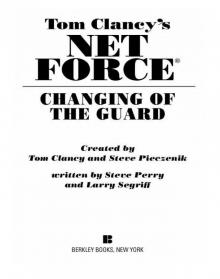 Changing of the Guard
Changing of the Guard Clear and Present Danger
Clear and Present Danger Hounds of Rome
Hounds of Rome Breaking Point
Breaking Point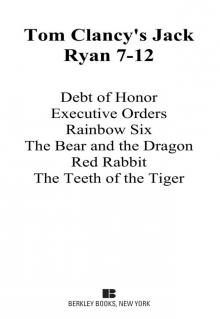 Tom Clancy's Jack Ryan Books 7-12
Tom Clancy's Jack Ryan Books 7-12 Full Force and Effect
Full Force and Effect The Archimedes Effect
The Archimedes Effect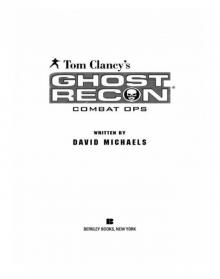 Combat Ops
Combat Ops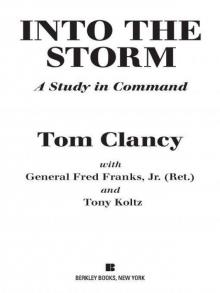 Into the Storm: On the Ground in Iraq
Into the Storm: On the Ground in Iraq Under Fire
Under Fire Point of Impact
Point of Impact Red Rabbit
Red Rabbit Rainbow Six
Rainbow Six The Hunt for Red October
The Hunt for Red October The Teeth of the Tiger
The Teeth of the Tiger Conviction (2009)
Conviction (2009) Battle Ready
Battle Ready Patriot Games
Patriot Games The Sum of All Fears
The Sum of All Fears Fallout (2007)
Fallout (2007) Red Storm Rising
Red Storm Rising The Cardinal of the Kremlin
The Cardinal of the Kremlin Executive Orders
Executive Orders Lincoln, the unknown
Lincoln, the unknown Threat Vector
Threat Vector The Hunted
The Hunted Shadow Warriors: Inside the Special Forces
Shadow Warriors: Inside the Special Forces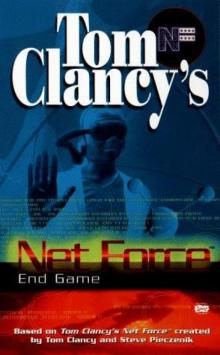 End Game
End Game Special Forces: A Guided Tour of U.S. Army Special Forces
Special Forces: A Guided Tour of U.S. Army Special Forces Locked On
Locked On Line of Sight
Line of Sight Tom Clancy Enemy Contact - Mike Maden
Tom Clancy Enemy Contact - Mike Maden Fighter Wing: A Guided Tour of an Air Force Combat Wing
Fighter Wing: A Guided Tour of an Air Force Combat Wing Springboard
Springboard Line of Sight - Mike Maden
Line of Sight - Mike Maden EndWar
EndWar Dead or Alive
Dead or Alive Tom Clancy Support and Defend
Tom Clancy Support and Defend Checkmate
Checkmate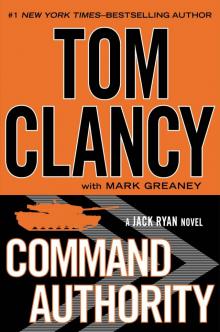 Command Authority
Command Authority Carrier: A Guided Tour of an Aircraft Carrier
Carrier: A Guided Tour of an Aircraft Carrier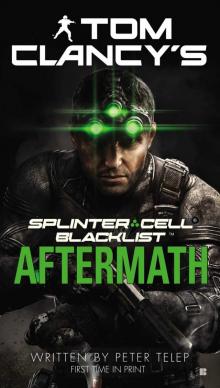 Blacklist Aftermath
Blacklist Aftermath Marine: A Guided Tour of a Marine Expeditionary Unit
Marine: A Guided Tour of a Marine Expeditionary Unit Commander-In-Chief
Commander-In-Chief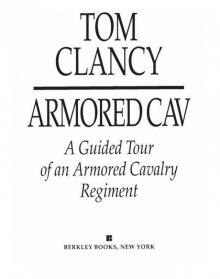 Armored Cav: A Guided Tour of an Armored Cavalry Regiment
Armored Cav: A Guided Tour of an Armored Cavalry Regiment Tom Clancy's Jack Ryan Books 1-6
Tom Clancy's Jack Ryan Books 1-6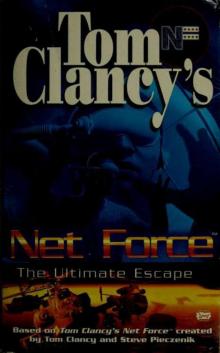 The Ultimate Escape
The Ultimate Escape Airborne: A Guided Tour of an Airborne Task Force
Airborne: A Guided Tour of an Airborne Task Force Debt of Honor
Debt of Honor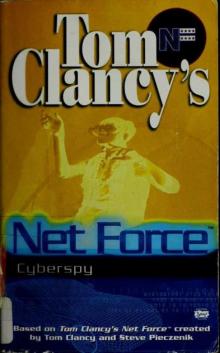 Cyberspy
Cyberspy Point of Contact
Point of Contact Operation Barracuda (2005)
Operation Barracuda (2005) Choke Point
Choke Point Power and Empire
Power and Empire Every Man a Tiger: The Gulf War Air Campaign
Every Man a Tiger: The Gulf War Air Campaign Endgame (1998)
Endgame (1998) EndWar: The Missing
EndWar: The Missing Splinter Cell (2004)
Splinter Cell (2004) The Great Race
The Great Race True Faith and Allegiance
True Faith and Allegiance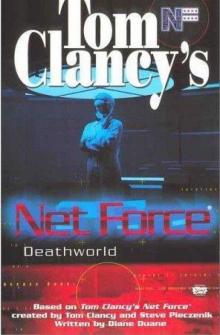 Deathworld
Deathworld Ghost Recon (2008)
Ghost Recon (2008)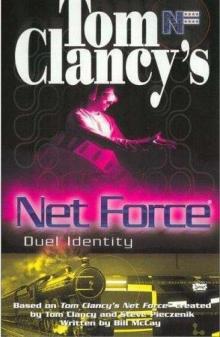 Duel Identity
Duel Identity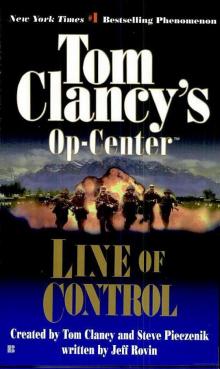 Line of Control o-8
Line of Control o-8 The Hunt for Red October jr-3
The Hunt for Red October jr-3 Hidden Agendas nf-2
Hidden Agendas nf-2 Acts of War oc-4
Acts of War oc-4 Ruthless.Com pp-2
Ruthless.Com pp-2 Night Moves
Night Moves The Hounds of Rome - Mystery of a Fugitive Priest
The Hounds of Rome - Mystery of a Fugitive Priest Into the Storm: On the Ground in Iraq sic-1
Into the Storm: On the Ground in Iraq sic-1 Threat Vector jrj-4
Threat Vector jrj-4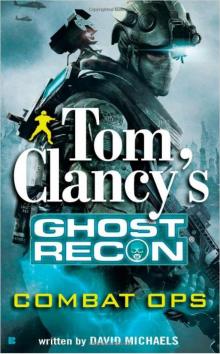 Combat Ops gr-2
Combat Ops gr-2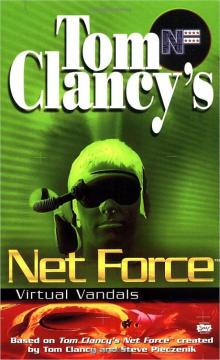 Virtual Vandals nfe-1
Virtual Vandals nfe-1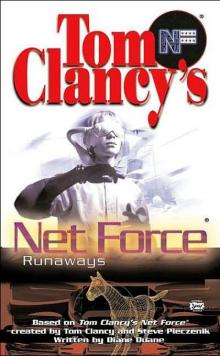 Runaways nfe-16
Runaways nfe-16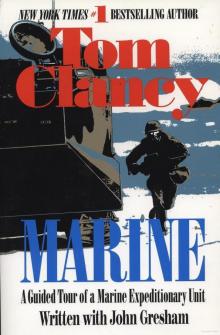 Marine: A Guided Tour of a Marine Expeditionary Unit tcml-4
Marine: A Guided Tour of a Marine Expeditionary Unit tcml-4 Shadow Warriors: Inside the Special Forces sic-3
Shadow Warriors: Inside the Special Forces sic-3 Jack Ryan Books 1-6
Jack Ryan Books 1-6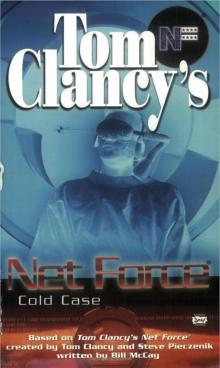 Cold Case nfe-15
Cold Case nfe-15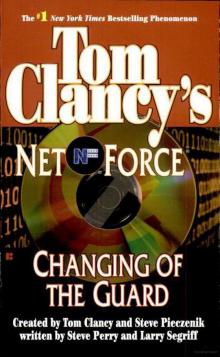 Changing of the Guard nf-8
Changing of the Guard nf-8 Splinter Cell sc-1
Splinter Cell sc-1 Battle Ready sic-4
Battle Ready sic-4 The Bear and the Dragon jrao-11
The Bear and the Dragon jrao-11 Fighter Wing: A Guided Tour of an Air Force Combat Wing tcml-3
Fighter Wing: A Guided Tour of an Air Force Combat Wing tcml-3 Patriot Games jr-1
Patriot Games jr-1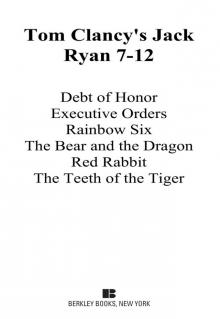 Jack Ryan Books 7-12
Jack Ryan Books 7-12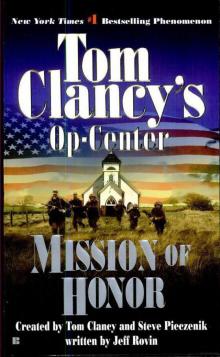 Mission of Honor o-9
Mission of Honor o-9 Private Lives nfe-9
Private Lives nfe-9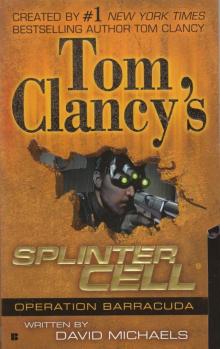 Operation Barracuda sc-2
Operation Barracuda sc-2 Cold War pp-5
Cold War pp-5 Point of Impact nf-5
Point of Impact nf-5 Red Rabbit jr-9
Red Rabbit jr-9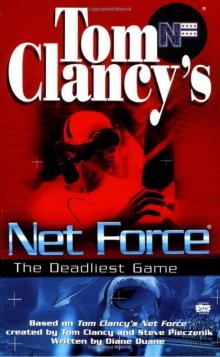 The Deadliest Game nfe-2
The Deadliest Game nfe-2 Springboard nf-9
Springboard nf-9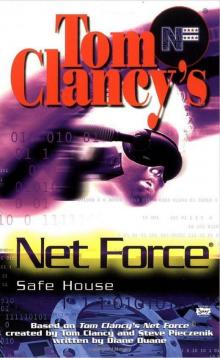 Safe House nfe-10
Safe House nfe-10 EndWar e-1
EndWar e-1 Duel Identity nfe-12
Duel Identity nfe-12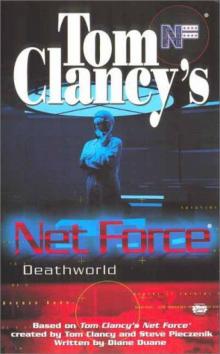 Deathworld nfe-13
Deathworld nfe-13 Politika pp-1
Politika pp-1 Rainbow Six jr-9
Rainbow Six jr-9 Tom Clancy's Power Plays 1 - 4
Tom Clancy's Power Plays 1 - 4 Endgame sc-6
Endgame sc-6 Executive Orders jr-7
Executive Orders jr-7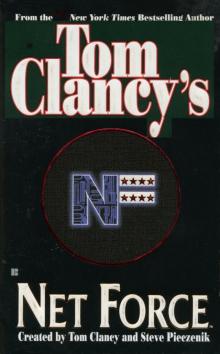 Net Force nf-1
Net Force nf-1 Call to Treason o-11
Call to Treason o-11 Locked On jrj-3
Locked On jrj-3 Against All Enemies
Against All Enemies The Sum of All Fears jr-7
The Sum of All Fears jr-7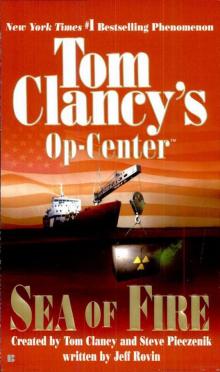 Sea of Fire o-10
Sea of Fire o-10 Fallout sc-4
Fallout sc-4 Balance of Power o-5
Balance of Power o-5 Shadow Watch pp-3
Shadow Watch pp-3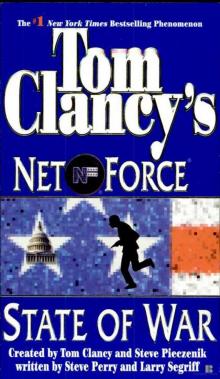 State of War nf-7
State of War nf-7 Wild Card pp-8
Wild Card pp-8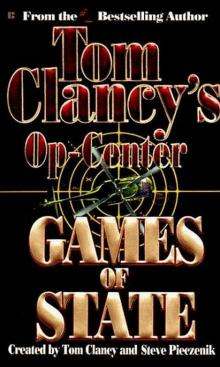 Games of State o-3
Games of State o-3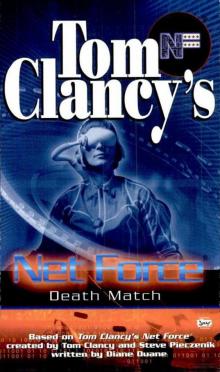 Death Match nfe-18
Death Match nfe-18 Against All Enemies mm-1
Against All Enemies mm-1 Every Man a Tiger: The Gulf War Air Campaign sic-2
Every Man a Tiger: The Gulf War Air Campaign sic-2 Cybernation nf-6
Cybernation nf-6 Support and Defend
Support and Defend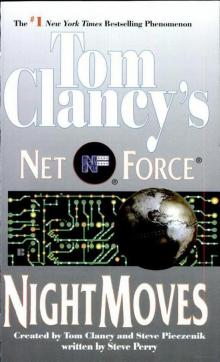 Night Moves nf-3
Night Moves nf-3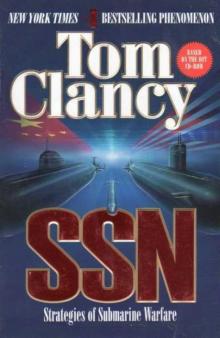 SSN
SSN Cutting Edge pp-6
Cutting Edge pp-6 The Cardinal of the Kremlin jrao-5
The Cardinal of the Kremlin jrao-5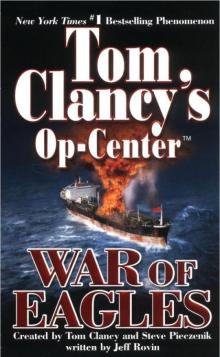 War of Eagles o-12
War of Eagles o-12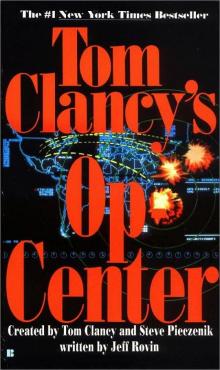 Op-Center o-1
Op-Center o-1 Mirror Image o-2
Mirror Image o-2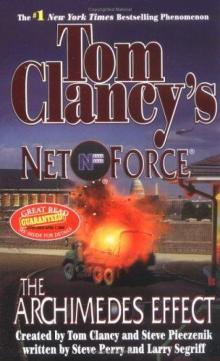 The Archimedes Effect nf-10
The Archimedes Effect nf-10 Teeth of the Tiger jrj-1
Teeth of the Tiger jrj-1 Bio-Strike pp-4
Bio-Strike pp-4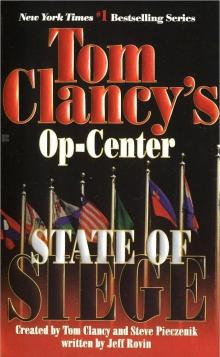 State of Siege o-6
State of Siege o-6 Debt of Honor jr-6
Debt of Honor jr-6 Zero Hour pp-7
Zero Hour pp-7 Ghost Recon gr-1
Ghost Recon gr-1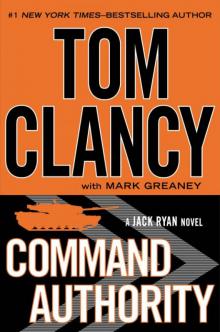 Command Authority jr-10
Command Authority jr-10 Tom Clancy's Power Plays 5 - 8
Tom Clancy's Power Plays 5 - 8 Checkmate sc-3
Checkmate sc-3 Breaking Point nf-4
Breaking Point nf-4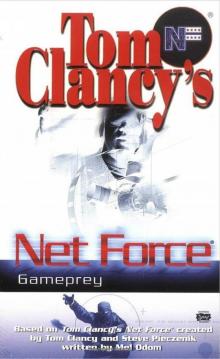 Gameprey nfe-11
Gameprey nfe-11 The Hunted e-2
The Hunted e-2 Hidden Agendas
Hidden Agendas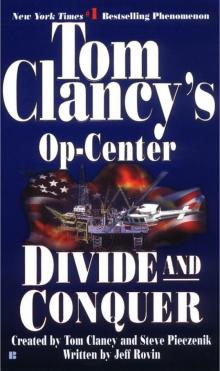 Divide and Conquer o-7
Divide and Conquer o-7